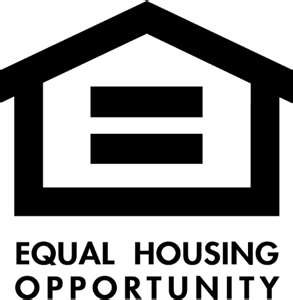Fair housing advocates celebrated a major milestone last month when HUD issued final regulations ratifying that “disparate impact analysis” can in fact be used to assess compliance with the federal Fair Housing Act.
There are still some in the housing industry who state outright that they will not rent, sell, or lend to certain groups of people. But these days, the barriers that people face in their search for housing more often are rooted in policies or practices that may appear neutral on their face, but disproportionately harm families, people of color, people with disabilities, etc. Such policies, when they are allowed to stand unchallenged, affect us all.
Under HUD’s new rule, such policies and practices can be challenged with statistics showing a disparate impact or by otherwise showing that they cause or would predictably cause a disproportionately harmful impact on members of a class that is protected under the Fair Housing Act.
Take, for example, the infamous “blood relative” ordinance adopted by St. Bernard Parish after Hurricane Katrina.
The ordinance required owners of single family properties in the Parish to get special permission from the Parish before they could rent those homes to someone other than a blood relative. Some 93 percent of the residents of St. Bernard Parish are white. Until the blood relative ordinance was challenged by the Greater New Orleans Fair Housing Action Center and overturned by the court, this policy effectively barred access to people of color.
Similarly, Yorktown, New York’s “local preference” policy meant that first dibs on affordable rental housing in that predominantly white community in Westchester County went to people who already lived there, limiting access for people of color who came from other parts of the county or region. This policy was also overturned after the Fair Housing Justice Center challenged it in court.
A number of lending discrimination cases brought by the US Department of Justice in the last few years have relied on the disparate impact doctrine. The defendants included some of the country’s largest lenders, such as Wells Fargo and Countrywide, as well as smaller and mid-sized lenders like SunTrust, Prime Lending and GFI Mortgage Bankers. In each of these cases, the lender engaged in policies or practices that led to borrowers of color, most frequently African-American and Latino borrowers, paying higher costs than similarly situated white borrowers. In some of the cases, the companies also steered borrowers of color into risky, high priced subprime loans while providing comparable white borrowers with less risky, less expensive prime mortgages.
Or look at the case recently settled by HUD, overturning a Virginia landlord’s policy of not providing rental applications to prospective tenants who couldn’t communicate effectively in English, even if they brought their own translator into the rental office. Nor could prospective tenants take rental applications home to get help with translation. This policy was very effective in keeping out immigrants from non-English speaking countries or others with limited proficiency in English.
Then there are the landlords who refuse to consider income from any source other than a full-time job. That policy slams the door in the face of people with disabilities, whose income would sufficient to cover the rent, but comes in whole or in part from disability payments. As more veterans come home with disabling injuries from our wars in Iraq, Afghanistan and elsewhere, such policies harm more and more of us.
Land use policies that exclude multi-family housing, rental policies that limit the number of people per room and exclude families with children, lending policies that discount income earned by women on maternity leave or require them to prove they’ll return to work after the birth of their children – there are many, many examples of policies and practices that prevent particular groups of people from living in the communities of their choice, and prevent other residents in those communities from enjoying the benefits of diversity.
On More Solid Footing
It is just these types of policies and practices that the disparate impact doctrine is designed to dismantle. Under the regulations, the company (landlord, lender, real estate agency, etc.) or jurisdiction using the contested policy then has the opportunity to show that it is tied to a substantial, legitimate, non-discriminatory interest. If it can demonstrate that, the burden shifts back to the complainant or plaintiff to show that the legitimate interest can be served through another effective means that is less discriminatory in its impact. Readers who are interested in more detail about the new rule can find it here, or look out for an article by Scott Chang, of the civil rights law firm Relman, Dane and Colfax in an upcoming issue of the Housing Law Bulletin.
The disparate impact doctrine is not new. It has been in use for decades and has been upheld by all 11 US Courts of Appeal that have considered its validity. It has also come under attack from some in the industry who would rather not take the time to make sure their policies and practices do not disadvantage particular groups of people. (See Greg Squires on “4 Ways Critics of the Disparate Impact Doctrine Have Got It Wrong.”) HUD, by issuing the regulation, has taken an important step to protect and preserve disparate impact as a tool for expanding access to housing.
We all know that where you live has an enormous impact on your success in life: your access to education, jobs, transportation, health care, recreation, healthy food, and even your life expectancy. The idea that everyone should get a fair shake is a basic American value, and it means that what you look like, where you come from, what religion you observe or whether you have children should not determine where you can live. Diverse, thriving communities are a source of strength for our country as the world becomes increasingly interconnected. Barriers that restrict access and housing choice based on race, religion, national origin, family status, disability or any of the other factors protected under the Fair Housing Act undermine that strength and our shared prosperity. In enacting the disparate impact rules, HUD has taken a critically important, common sense step to help guarantee that prosperity.
All of us in the affordable housing, community development and civil rights fields who are trying to expand housing choice should celebrate HUD’s action in issuing a final rule. Perhaps the best way to celebrate is to put this rule to work whenever we encounter discriminatory policies or practices that unfairly limit access to housing opportunities.





Comments